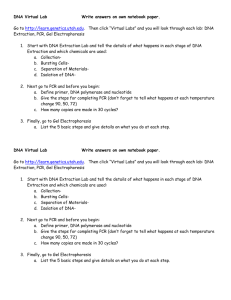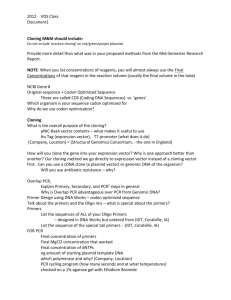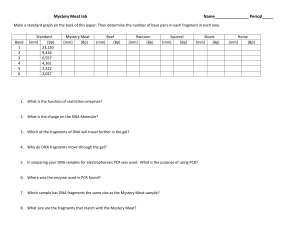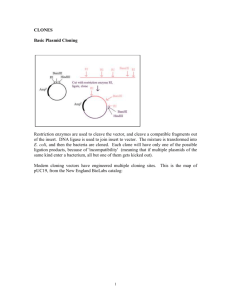SLiCE cloning protocol (adapted from Zhang 2012): Preparation of
advertisement
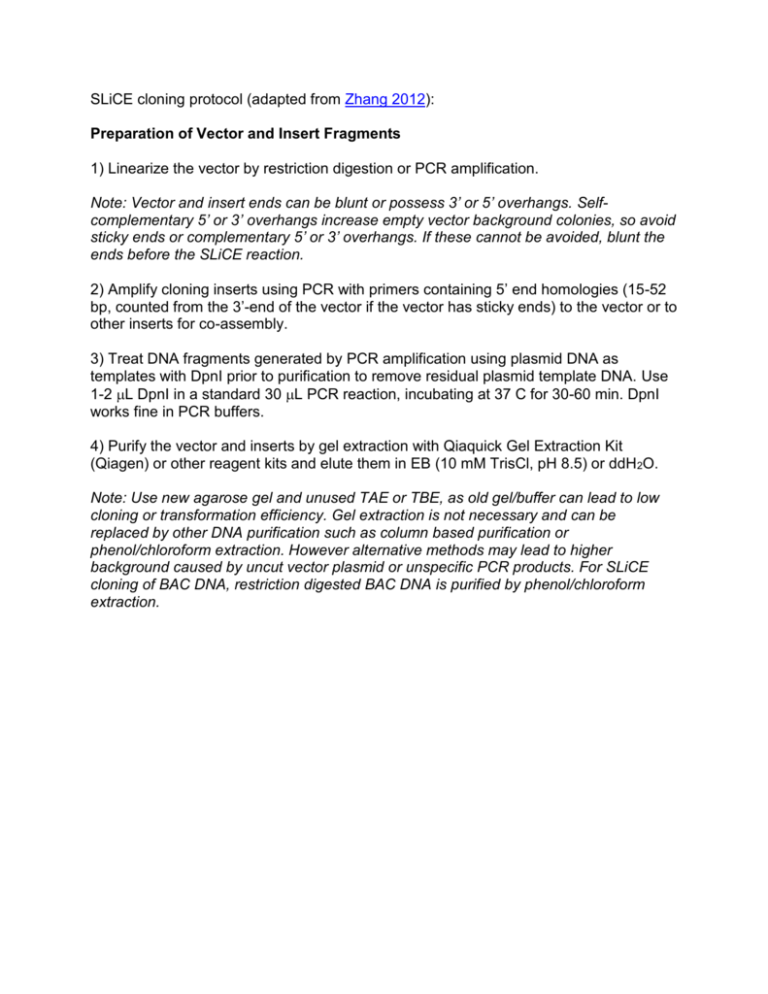
SLiCE cloning protocol (adapted from Zhang 2012): Preparation of Vector and Insert Fragments 1) Linearize the vector by restriction digestion or PCR amplification. Note: Vector and insert ends can be blunt or possess 3’ or 5’ overhangs. Selfcomplementary 5’ or 3’ overhangs increase empty vector background colonies, so avoid sticky ends or complementary 5’ or 3’ overhangs. If these cannot be avoided, blunt the ends before the SLiCE reaction. 2) Amplify cloning inserts using PCR with primers containing 5’ end homologies (15-52 bp, counted from the 3’-end of the vector if the vector has sticky ends) to the vector or to other inserts for co-assembly. 3) Treat DNA fragments generated by PCR amplification using plasmid DNA as templates with DpnI prior to purification to remove residual plasmid template DNA. Use 1-2 L DpnI in a standard 30 L PCR reaction, incubating at 37 C for 30-60 min. DpnI works fine in PCR buffers. 4) Purify the vector and inserts by gel extraction with Qiaquick Gel Extraction Kit (Qiagen) or other reagent kits and elute them in EB (10 mM TrisCl, pH 8.5) or ddH 2O. Note: Use new agarose gel and unused TAE or TBE, as old gel/buffer can lead to low cloning or transformation efficiency. Gel extraction is not necessary and can be replaced by other DNA purification such as column based purification or phenol/chloroform extraction. However alternative methods may lead to higher background caused by uncut vector plasmid or unspecific PCR products. For SLiCE cloning of BAC DNA, restriction digested BAC DNA is purified by phenol/chloroform extraction. SLiCE Reaction 1) Prepare 10X SLiCE Buffer in a 1.5 mL tube : + + + + 500 L 1 M Tris-HCl pH 7.5 50 L 2 M MgCl2 100 L 100 mM ATP 10 L 1 M DTT ddH20 to 1 mL Store at -20 C in 40-60 l aliquots. 2) Add the following ingredients into a 0.2 mL tube in this order and vortex: + +1 +1 + 10 linearized vector backbone (50-200 ng) each additional assembly piece (1:1-1:10 molar ratio of vector:insert) L 10X SLiCE buffer L PPY SLiCE extract ddH20 to L 3) Incubate the SLiCE reaction mix as above at 37 C for 1 hour using a PCR machine or water bath, and then place on ice. 4) Transform 1L of the assembly reaction into 100L of competent E. coli and/or run a diagnostic agarose gel to check for successful assembly. 5) For electroporation, transform 1L into 20 L electrocompetent cells. For large recombinant DNA, electroporation is required. In complex cloning, electroporation is recommended, as it is 10-100 times as efficient as chemical transformation.


